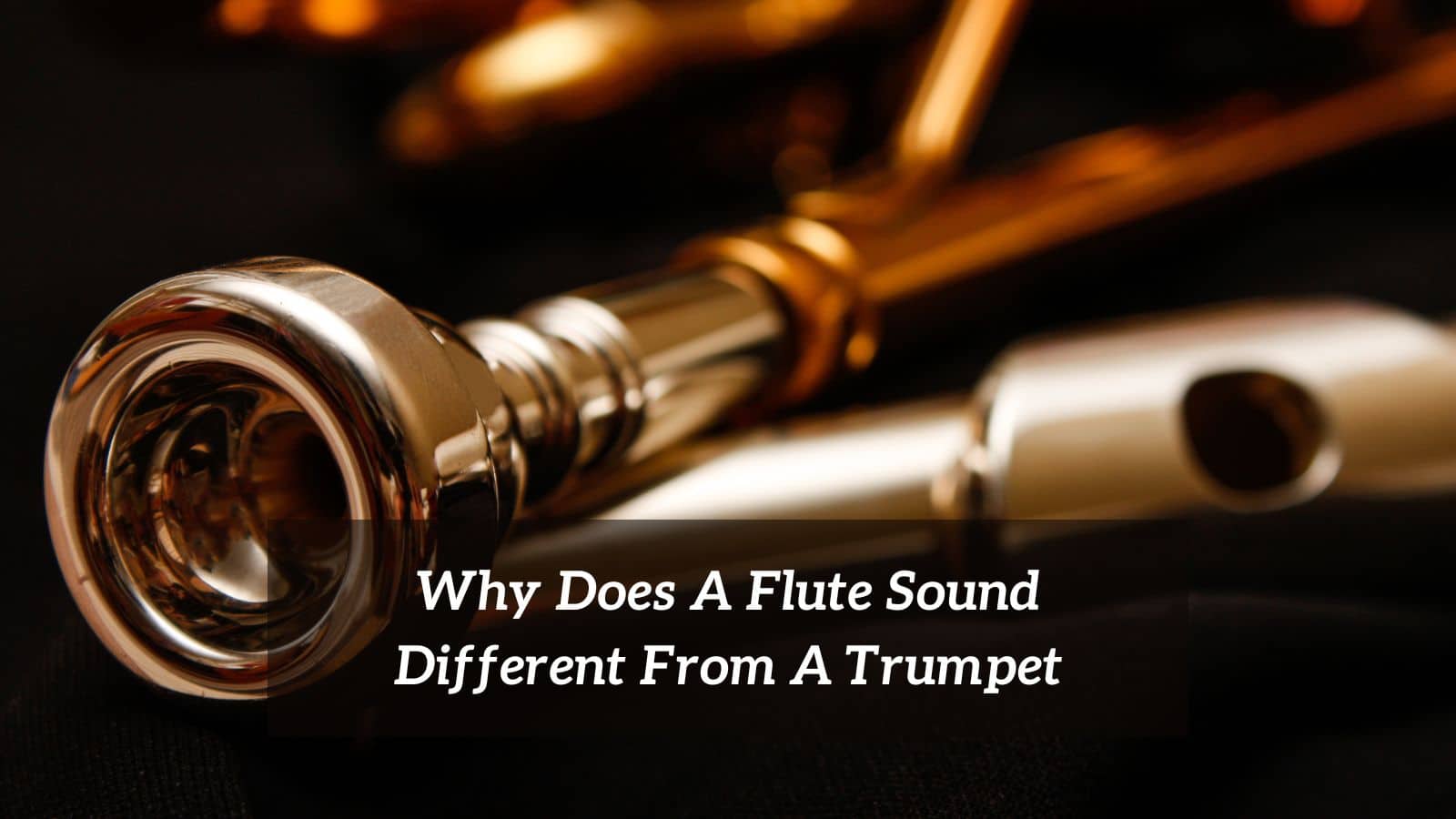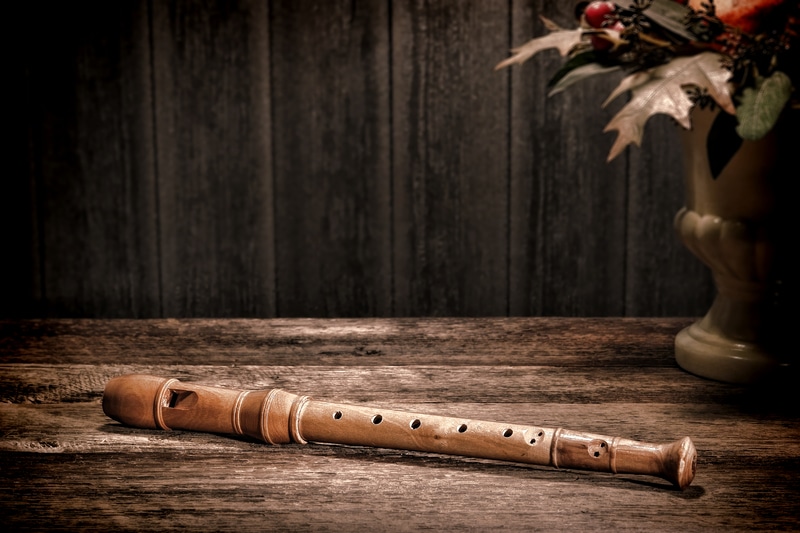
The flute and the trumpet are two popular instrument choices.
On the surface, they have a fair amount in common – they are both wind instruments (that is, they produce sound when air is vibrated through them), are important members of the orchestra and other musical ensembles, and are made from metal. So why do they sound so different?
Why Does A Flute Sound Different From A Trumpet?
The Flute
The flute belongs to the woodwind family, which also includes the oboe, clarinet, and bassoon, as well as their related auxiliary instruments. While those instruments are all made out of wood – hence the name “woodwind” – the flute is often not.
Though there are flutes made from wood, the vast majority of modern flutes are made from metal, such as nickel, silver, gold, platinum, or any combination thereof. That wasn’t always the case, however.
Flutes were made from wood throughout most of their history, all the way up until the invention of the Boehm flute in 1847. Even after the invention of the modern instrument, some wood flute enthusiasts remained steadfast.
Metal flutes did not become the norm until well into the twentieth century. Part of the reason they became more popular, however, is because they are significantly more resonant than wood instruments.
As the orchestra’s size has expanded over the centuries, the flute has had a greater need to project, leading to the increased popularity of metal flutes. Typically, they are also easier to play than wood flutes.
Sound on the flute is produced by blowing air across the mouthpiece, which then vibrates within the tube. This is different from other woodwind instruments, which are played by blowing air into a reed, which then vibrates to produce sound.
It can be difficult to produce a good quality sound on the flute because the performer must find the proper angle to direct the air into the instrument.
It takes a great deal of air to play with a full sound on the instrument, because much of the air blown does not end up inside the instrument. An ideal flute sound has a strong core to it, but also has a cushion of air around the core, creating depth and resonance in the tone.
The sound quality of a flute is somewhat dependent on the material it is made from. For instance, silver flutes tend to have a bright sound that projects well in a hall, whereas gold flutes have a darker, richer sound with a broad range of tone colors.
In general, however, flutes are known for their warm sound and ability to reach high notes. The sound can at times be a little metallic, but never brassy.
The Trumpet
The trumpet belongs to the brass family, along with the french horn, trombone, and tuba. These instruments are unsurprisingly made out of brass. Unlike the flute, the trumpet is not made from a different material than the other members of its family.
Though early brass instruments were made from a variety of materials including wood, bone, and shells, all brass instruments today are made completely from brass, which is made from a combination of copper and zinc.
The trumpet is a particularly common instrument choice in the brass family, and is probably the most recognizable to non-musicians.
Trumpets – and all brass instruments for that matter – produce sound differently than woodwind instruments, though the sound still occurs because of vibration. A trumpet player, however, creates his or her own vibration by “buzzing” their lips against the mouthpiece.
The tone and the register can be manipulated based on the speed of the buzzing, the amount of air, and the tightness of the lips. It takes a while to learn to properly “buzz,” and this skill must be maintained throughout a brass player’s life.
Most players warm up in the mornings or before playing by doing a buzzing exercise.
Because it involves so much pressure against the mouthpiece and between the lips, it is often very tiring to play the trumpet; a trumpet player will have to take significantly more breaks or practice less than a flute player would.
The trumpet also only has three valves (similar to keys; what is pressed to produce different pitches). This means that certain finger combinations correspond to more than one note. This is different from a flute, which has a unique finger combination for every pitch.
Because all trumpets are made from brass, the sound quality between different types is not as drastic of a difference as on the flute (though of course, different makes and models will still have different strengths and weaknesses).
Trumpets are known for being loud, powerful instruments with bright, brassy sounds. They project very well over a large ensemble, and are often associated with fanfares or exciting announcements.
What do these differences mean?
There are clearly some notable differences between the flute and the trumpet. First, the material: though they are both made of metal, trumpets are made of brass, while flutes are made from precious metals (except for at the student/beginning level).
The material has a huge impact on the sound of any instrument; these particular differences result in the flute having a warm, resonant sound, while the trumpet has a striking, metallic one.
Second, the sound production: flutes make sound by blowing across a mouthpiece, while trumpets make sound by buzzing into one. This creates very different quantities of sound and abilities to project.
The trumpet is typically much louder than the flute, making it a struggle to play quietly, while the opposite can often be true of the flute.
Additionally, a flute player can more easily manipulate pitch on the instrument by simply changing the finger combinations, while a trumpet player will have to use the valves as well as varying amounts of air and buzzing speeds to change pitch.
Like all instruments, the flute and trumpet are unique in their sound. If they weren’t, there would be no need for both of them in an ensemble. Each brings something special to the table, and both have beautiful, expressive qualities and important roles in the orchestra.


